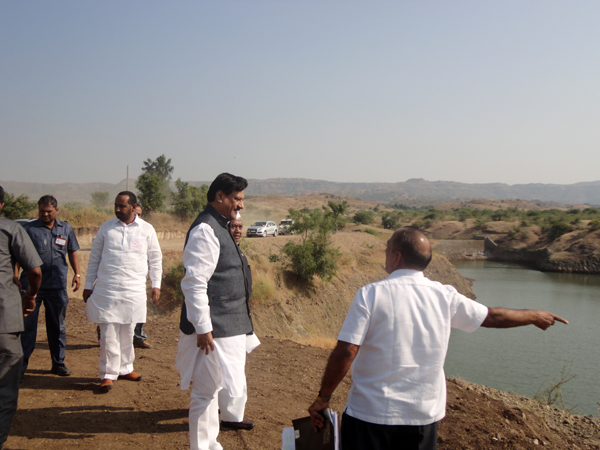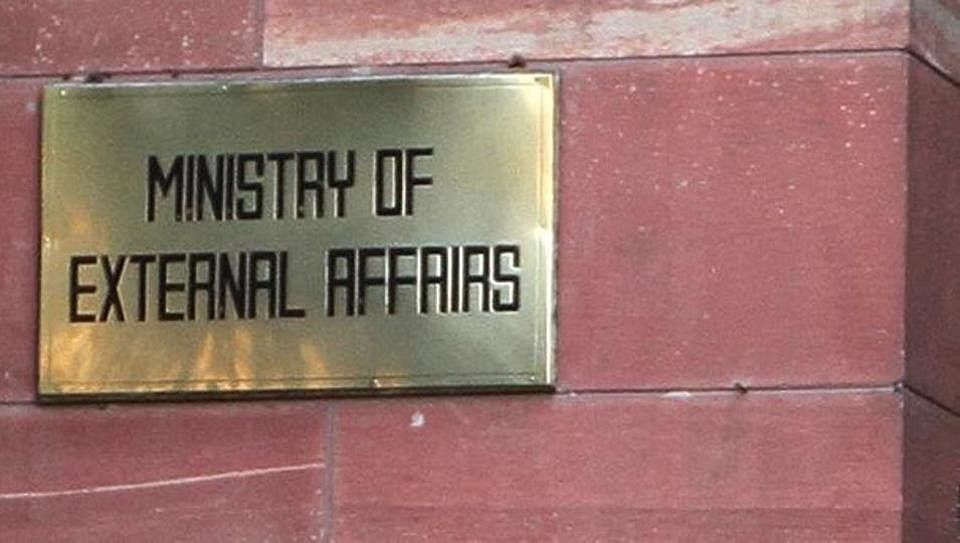Amidst acute drought in Maharashtra, there is hope in the form of Shirpur

Maharashtra is reeling under severe drought for the fourth consecutive year now. Steady reduction in rainfall and depletion of ground water levels over the years, have forced farmers to quit their lands and sell their cattle. Thousands have migrated to cities like Mumbai and Pune in search of jobs and water.
While the situation in Marathwada, Konkan, Khandesh and Northern regions of the state is highly dismal and far from improving till it rains sufficiently, Shirpur tehsil in Dhulia district has enough water for drinking as well as agriculture. In fact farmers in Shirpur tehsil are cultivating two crops. They also supply around 80% of vegetables coming in to Mumbai.
But the grass wasn't always greener here

The situation in Shirpur was just like the other drought-hit areas of the state a decade ago. Shirpur also saw labour migrations post-monsoon because farmers were unable to sustain crops throughout the year.
The region is one of the rain shadow areas of the state with very little rainfall. The ground water table of the tehsil had receded to more than 120 feet over time. Vast agricultural lands had become barren because the owners had stopped farming.
Read: Water supply once a month: Lessons to be learnt form Latur
The situation was deteriorating with each passing day. Amrish Patel, MLA from Dhulia was desperately trying to find a sustainable way to provide water to people of his area. It was in mid-2003, that he noticed a successful water conservation scheme implemented by the geology department of the State government.
Patel met the man behind its success, senior geologist Suresh Khanapurkar. Realising the potential of the scheme, and sensing that he could end the miseries of his people, Patel asked Khanapurkar to come to Dhulia and work on a water conservation project in Shirpur tehsil. Khanapurkar agreed to take up the assignment post retirement, which was just six months away.
According to Khanapurkar, the region is dependant on the south-west monsoons, which it gets for a very short period of time. Around 75% of rainfall takes places in 13 of the total 36 days of rainfall. "Ground water recharge was not possible due to heavy silt accumulation in water bodies and over exploitation of water resources. We appealed to people to not rush for water after it rained, but to let it percolate into the ground, so that aquifers are recharged," Khanapurkar said.
The groundwater resources in the area had been over-exploited by more than 30,000 farmers across generations. By the 1990s, all the wells that had been dug had dried up.
Due to the geological composition of the region, the process of aquifer recharge was also slow as majority of the rainwater would runoff. "One-third area of the tehsil is Tapi alluvium and the rest is Deccan Basalt. Millions of aquifers are present at various levels in both the belts. Those in basalt take less time to recharge as compared to those in alluvium," Khanapurkar explains.
A changed Shirpur
"The first thing we did was to survey all the villages in the tehsil. Unless you know the composition of the soil, water conservation work cannot yield desired results. Once the survey was complete, the actual work began in early 2004. It was to deepen, widen and de-silt the water bodies. I wanted to trap every drop of rainwater and make it percolate into the ground," Khanapurkar said.
After meticulous work for over eight years, all the mullahs, rivers, lakes and other water bodies started to retain a considerable quantity of water round the year. For the past ten years or so, farmers in the tehsil have been growing two to three crops annually. Most of them are growing fruits and exporting them as well.
"80% of vegetables supplied to Mumbai comes from Shirpur tehsil. Thousands of youths who had migrated to Pune and Mumbai for petty jobs have returned to their villages and are cultivating their lands. People with as low as two acres of land are earning as much as Rs 6 lakh per annum," said Khanapurkar.
Initially, the project was implemented in 35 out of 149 villages, covering 150 sq km of the tehsil. Now it has been expanded to 200 sq km, adding more villages.
Angioplasty of Streams
After a scientific study of the region, Khanapurkar prepared a programme to revive the water resources, and recharge aquifers at the same time. "It's not rocket science. All it needed was scientific deepening, widening and de-silting of the water bodies, so that aquifers were opened and rain water percolated into them. The principle is the same as angioplasty done on humans. That is why I call it Angioplasty of Streams," he says.
Also read:Drought & development: why Maharashtra is fast running out of water
All the water streams in the tehsil were widened 5-30 meters and deepened 10-15 meters. The impervious layer of yellow soil and hard basalt rock were removed in the process and cascading cement bunds were also built along the streams. Today the minimum storage capacity of the streams and lakes is around 280 million cubic meters, and they can hold maximum up to 4,240 million cubic meter of water, according to Khanapurkar.
The revolution has transformed the lives of people in Shirpur, and there are more and more people demanding that the project be expanded. "I am inundated with requests from several people to implement the project in their area. We have started the same in many parts of the state. The results would be visible in years to come," Khanapurkar says confidently.
Meanwhile, in the rest of Maharashtra...
Marathwada is the worst hit region of the state. Water supply to many villages and towns here has reduced to once a month. The situation in cities such as Latur and Parbhani is so volatile that the civic administration has imposed Section 144 around water tanks and reservoirs to prevent conflict among groups of people, which could turn highly violent anytime.
Latur is known for its education facilities. Lots of students come to the city every year to attend summer classes for standard 10 and 12, to study under the famous 'Latur Pattern' which has produced several meritorious students. Summer classes here are the first preference of students from across the state to improve their performance in the Board exams.
However, this year these students will have to study at home and settle for the facilities available there. The state government has decided to not allow these summer classes this year, anticipating an additional load on the available water.
The situation in other parts of the state such as North Maharashtra and Konkan is no different. It is only a matter of time before the civic administration in these areas will also be forced to enforce Section 144. In fact, the police administration at Thane is already contemplating deploying a police force around water tanks and reservoirs to prevent any untoward incident. The water resources in the district are fast depleting and sustaining till the monsoon is the biggest challenge for the administration.
Nashik district in North Maharashtra too is facing acute water shortage. For the first time in the last 139 years, the famous Ram Kund on the river Godavari has dried up. The civic administration had to fill it with tanker water so that the devotees could take their holy dip on the occasion of Gudhi Padva, the first day of the Marathi new year.
For these reasons and more, Shirpur tehsil is an example that needs to be implemented across the state. While hundreds of farmers are committing suicide in Maharashtra, and countless people are dependent on water tankers, there isn't a single water tanker in Shirpur and no farmer has taken his own life.
Edited by Anna Verghese
First published: 17 April 2016, 11:30 IST




![BJP's Kapil Mishra recreates Shankar Mahadevan’s ‘Breathless’ song to highlight Delhi pollution [WATCH] BJP's Kapil Mishra recreates Shankar Mahadevan’s ‘Breathless’ song to highlight Delhi pollution [WATCH]](https://images.catchnews.com/upload/2022/11/03/kapil-mishra_240884_300x172.png)

![Anupam Kher shares pictures of his toned body on 67th birthday [MUST SEE] Anupam Kher shares pictures of his toned body on 67th birthday [MUST SEE]](https://images.catchnews.com/upload/2022/03/07/Anupam_kher_231145_300x172.jpg)






